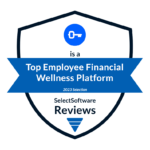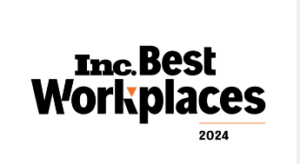Note: This post originally published in Fast Company on January 4, 2023.
As record inflation continues, evictions pile up, healthcare costs continue to rise, layoffs hit the tech and other industries hard, and the pause on student loan repayment is about to expire, many Americans are struggling financially. As many as seven in 10 may be living paycheck to paycheck.
Employees and employers alike are stressed. There’s no escaping it. And this cumulative anxiety is having an effect on employee benefits. Employers are increasingly vigilant about costs and spending. But they also know that because many employees are financially stressed, their evolving needs must be prioritized as competition continues for true talent, despite the wave of layoffs among companies whose workforces grew too big too fast.
In recent years, more and more companies have added mental health benefits, among other enhancements. But as employees’ needs evolve, employers need to go deeper. They need to address employees’ overall well-being in more meaningful, holistic ways that are also easy to use and cost-effective.
This means leaders need to pay closer attention to their employees’ individual situations.
- How many employees are staring down eviction notices?
- Which ones have taken second jobs to make ends meet?
- How much credit card or student loan debt do they have?
- Who has been affected by a change in income from someone else in their household?
The leaders who are able to better anticipate and address employees’ real personal and broader household needs through a more mindful approach to benefits are the businesses that will win out.
With that in mind, here are the key issues employers should be focusing on today when rethinking their benefits strategies.
1. Personalization
Benefits traditionally have been mainly a one-size-fits-all model. That’s no longer good enough. Personalization is now essential, but the right type and amount of personalization are key.
Consider this: A Fortune 100 company offered about 20 different choices for weight loss (online, group therapy, hospital supervised, etc.) so that people could choose the one that worked best for them. The problem is that so many choices can be overwhelming and that additional “choice” offering can have the opposite intended effect.
Employers need to minimize the entry points, so that they can still offer a lot of benefits and “choice,” but actually give people the convenience to navigate them. We’ve seen this with health care with companies like Accolade and Quantum Health, and we’ll start to see more employers look for these types of solutions for their broader benefits.
Personalization is less about the breadth of options available and more about the user experience. It’s about providing better, more personalized navigation to the right benefits at the right time and helping employees overcome the barriers to using those benefits, so that everyone, at all stages of life, can actually use the most-relevant benefits to them in a more meaningful way.
Beyond navigation, the path to achieving personalization is understanding more of what employees are experiencing and better meeting those needs. Employers will continue to expand their use of employee surveys, find new ways to study the data they already have (reviewing utilization of existing benefits and determining if they should offer something different), and look to partner with companies that can provide a more holistic view of a company’s data.
2. Segmentation
On the topic of personalization, it’s important to hone in on what specific segments of your workforce may need. Frontline workers, for example, may want a benefit like a PTO buyback—trading earned time off for additional money. But that might not have the same appeal for company leaders and executives, as access to that type of compensation may not be as much of a priority for them.
We’ll continue to see companies try to segment their benefit offerings in new ways. Employers don’t know everything that an employee is going to need. But if they at least understand broader segments, they can offer and help employees navigate an expanded benefits menu that’s more closely aligned with their role, needs, and stage of life.
3. Centralization
As employers try to curb spending wherever possible ahead of a feared recession, we’ll likely see more centralization of HR teams’ use of tech platforms and corresponding human support options.
Managing multiple point solutions and related relationships (sometimes in the double digits) can be challenging and inefficient for HR and benefits teams. By centralizing platforms, employers can still offer many point solutions, but in a way that takes much less time and energy from the HR team. Companies will have the ability to focus more on meeting employee needs, rather than being benefit integrators for their employees. The result is more engagement in the right benefit for each individual with less effort for the individual and for HR.
4. Enhancements
While remote and flexible work have become crucial for many companies’ ability to attract and retain talent, those work modes can come with their own drawbacks whether social isolation, the stress of juggling work and parenting, caring for aging loved ones, or other psychological pressures and household distractions. Caring for your employees is about understanding and meeting their needs.
The more employers understand that new normal, the more positive the impact of their benefit programs.
At my company, we’ve just started testing something called an “empathy circle.” This provides a chance for employees to come and talk things out in a safe place with their peers. So far, our employees have said that it’s been monumental for them as a way to let go of their stresses, find better balance, and allow them to take their best selves home.
Offering ways to show employees that their employer cares, is listening, and understands their struggles can be a powerful force for the positive. It can lead to small changes the employer can make that have large impacts, such as varying schedules, expanding employee learning to relevant topics that may be outside of the traditional list of topics offered through the employer, and ways to foster emotional safety at work.
In many ways, 2022 was a trial run for revamped benefits. When the Great Resignation wave crested in 2021 and power shifted to employees, many employers looked at upping pay and benefits as a way to attract and retain employees. This year, companies tried new approaches and solutions, offering everything from divorce support to advanced pay and free education to four-day workweeks and beyond.
In 2023, we’ll see companies take the lessons learned from the past year and continue to iterate, while trying to keep costs down. In particular, convenient and personal navigation will be top of mind as employers continue to evolve their benefits approach and find new ways to help engage and retain their most valuable asset: their people.
To learn more about Brightside and/or schedule a demo, click here.
Written by Petrina Thompson, Head of HR and Client Services at Brightside





